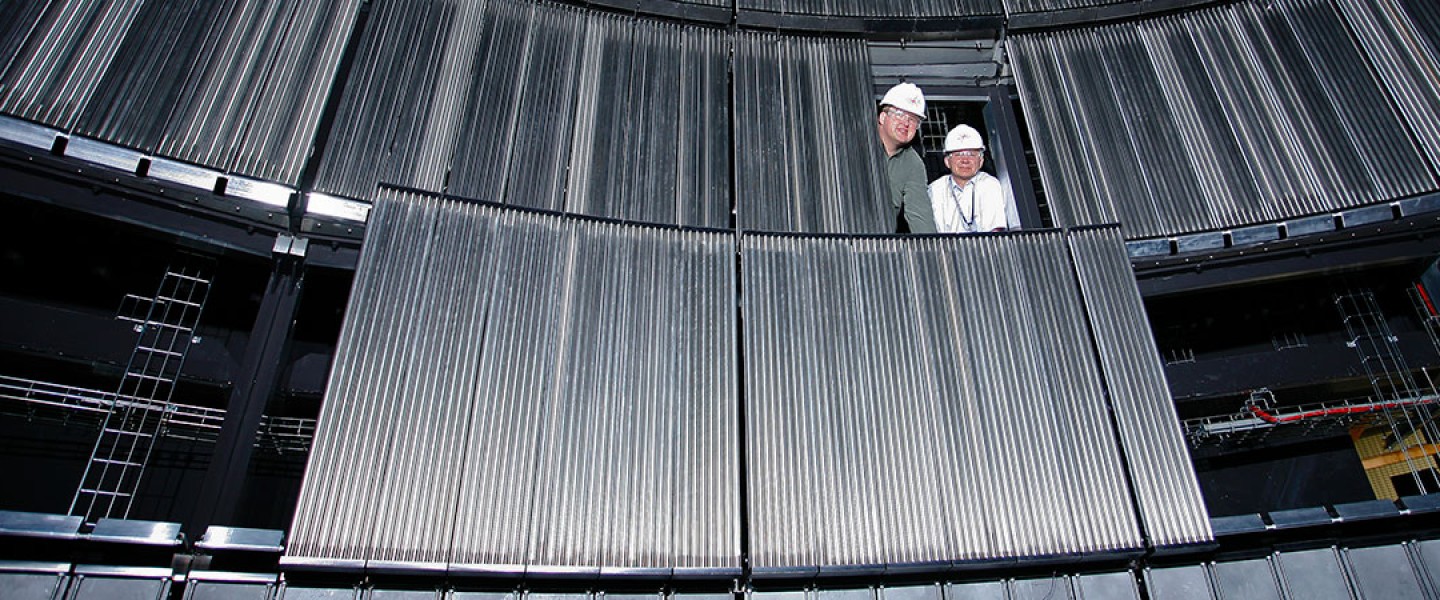


SEQUOIA is a direct geometry time-of-flight chopper spectrometer with fine energy transfer (ω) and wave-vector (Q) resolution. The instrument is used to conduct forefront research on dynamical processes in materials. In particular, SEQUOIA is enabling unprecedented high-resolution inelastic neutron scattering studies of magnetic excitations and fluctuations and lattice vibrations. The impact on condensed matter, materials science, and geology spans a cross-section of important research areas. These include unconventional superconductors, quantum magnetism, itinerant magnets, ferroelectrics, thermoelectrics, multiferroics, metal hydrides, and hydrogen dynamics in various materials.
SEQUOIA is also an outstanding tool for the investigation of novel systems and materials that are currently unknown. In general, SEQUOIA is the instrument of choice for experiments that require fine Q and ω resolution and large solid angle at low-to-intermediate scattering angles. References [1-2] provide further information regarding the design and operation of the SEQUOIA spectrometer.
[1] G. E. Granroth, A. I. Kolesnikov, T. E. Sherline, J. P. Clancy, K. A. Ross, J. P. C. Ruff, B. D. Gaulin, S. E. Nagler, "SEQUOIA: a newly operating chopper spectrometer at the SNS", Journal of Physics: Conference Series 251, 12058 (2010).
[2] M. B. Stone, J. L. Niedziela, D. L. Abernathy, L. DeBeer-Schmitt, G. Ehlers, O. Garlea, G. E. Granroth, M. Graves-Brook, A. I. Kolesnikov, A. Podlesnyak, and B. Winn, “A comparison of four direct geometry time-of-flight spectrometers at the Spallation Neutron Source”, Rev. Sci. Instrum. 85, 045113 (2014).
| Recommended Incident Energy Ranges | 5 meV-11 meV, 18 meV-4000 meV |
| Routine Energy Resolution | For Ei < 200 meV ~2%, 5% or 10% For Ei > 200 meV ~5-10% For Ei ~ 1000 meV ~3% with 1eV fine chopper |
Oak Ridge National Laboratory is managed by UT-Battelle LLC for the US Department of Energy